 W
WAcanthosicyos horridus is an unusual melon that is endemic to the Namib desert. In English it is known as Nara, butter-nuts, or butterpips; in one of the Khoisan languages it is locally called ǃnaras or ǃnara.
 W
WAustrocylindropuntia floccosa, also called waraqu is found in the high plains of Northern Peru and Bolivia.
 W
WBoscia senegalensis, commonly known as hanza, is a member of the family Capparaceae.
 W
WCapparis decidua, commonly known as karira, is a useful plant in its marginal habitat. Its spicy fruits are used for preparing vegetables, curry and fine pickles and can attract helpful insectivores; the plant also is used in folk medicine and herbalism. It can be used in landscape gardening, afforestation and reforestation in semidesert and desert areas; it provides assistance against soil erosion.
 W
WCapparis lasiantha is an endemic Australian plant with a range that extends from the Kimberley region through the Northern Territory and Queensland to northern New South Wales, primarily in drier inland areas although the species extends to the coast in Central Queensland. Common names are numerous and include wyjeelah, nepine, split jack, nipang creeper, nipan, native orange and bush caper.
 W
WThe wild orange is an Australian native plant found in dry inland areas of Australia. Its scientific name is Capparis mitchellii. It is not related to oranges, nor to the Osage-orange which is known as "wild orange" in North America, but to capers.
 W
WCereus repandus, the Peruvian apple cactus, is a large, erect, thorny columnar cactus found in South America. It is also known as giant club cactus, hedge cactus, cadushi, and kayush.
 W
WCitrullus ecirrhosus, commonly known as Namib tsamma, is a species of perennial desert vine in the gourd family, Cucurbitaceae, and a relative of the widely consumed watermelon. It can be found in both Namibia and South Africa, in particular the Namib Desert. It is the sister species to the bitter melon, Citrullus amarus with which it shares hard, white and bitter flesh.
 W
WCitrus glauca, commonly known as the desert lime, is a thorny shrub or small tree native to Queensland, New South Wales, and South Australia.
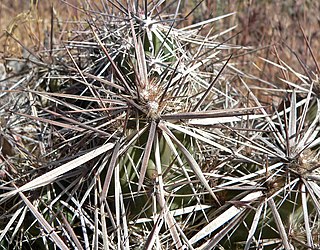 W
WCorynopuntia, also known as club chollas, is a genus in the family Cactaceae, established by Knuth in 1935. Molecular phylogenetic studies suggest that it should be included in Grusonia, a view accepted by Plants of the World Online as of June 2021.
 W
WCucumis metuliferus, commonly called the African horned cucumber, horned melon, spiked melon, jelly melon, kiwano, or cuke-a-saurus is an annual vine in the cucumber and melon family, Cucurbitaceae. Its fruit has horn-like spines, hence the name "horned melon". The ripe fruit has orange skin and lime green, jelly-like flesh. C. metuliferus is native to Southern Africa. It is found in South Africa, Namibia, Botswana, Zambia, Zimbabwe, Mozambique, and Angola.
 W
WPhoenix dactylifera, commonly known as date or date palm, is a flowering plant species in the palm family, Arecaceae, cultivated for its edible sweet fruit called dates. The species is widely cultivated across northern Africa, the Middle East, and South Asia, and is naturalized in many tropical and subtropical regions worldwide. P. dactylifera is the type species of genus Phoenix, which contains 12–19 species of wild date palms.
 W
WFicus petiolaris, commonly known as the petiolate fig and rock fig, is a fig that is endemic to Mexico from Baja California and Sonora south to Oaxaca. It grows from 10–20 feet high. It grows best with moderate water and partial shade. A unique feature is white hairs on the vein axils. Other common names include the Baja California rock fig, Palmer wild fig, and Brandegee wild fig.
 W
WFicus platypoda, commonly known as the desert fig or rock fig, is a fig that is endemic to central and northern Australia. It is a lithophytic plant that grows on rocky outcrops, reaching 10 m in height.
 W
WHyphaene thebaica, with common names doum palm and gingerbread tree, is a type of palm tree with edible oval fruit. It is a native to the Arabian Peninsula and also to the northern half and western part of Africa where it is widely distributed and tends to grow in places where groundwater is present.
 W
WMammillaria dioica, also called the strawberry cactus, California fishhook cactus, strawberry pincushion or fishhook cactus, is a cactus species of the genus Mammillaria. Its common name in Spanish is biznaga llavina.
 W
WMarsdenia australis, commonly known as the bush banana, silky pear or green vine is an Australian native plant. It is found in Central Australia and throughout Western Australia. It is a bush tucker food used by Indigenous Australians.
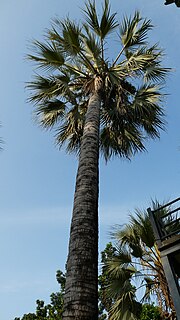 W
WMedemia argun is a rare species of the palm tree family (Arecaceae) native to Egypt and Sudan. It is the only species in the genus Medemia. The palm's dried dates have been found in ancient Egyptian tombs.
 W
WThe mongongo tree, mongongo nut or manketti tree is a member of the family Euphorbiaceae and of the monotypic genus Schinziophyton. A large, spreading tree, the mongongo reaches 15–20 metres tall. It is found on wooded hills and among sand dunes, and is associated with the Kalahari sand soil-types. The leaves are a distinctive hand-shape, and the pale yellow wood is similar in characteristics to balsa, being both lightweight and strong. The yellowish flowers occur in slender, loose sprays.
 W
WOpuntia, commonly called prickly pear, is a genus of flowering plants in the cactus family Cactaceae. Prickly pears are also known as tuna (fruit), sabra, nopal from the Nahuatl word nōpalli for the pads, or nostle, from the Nahuatl word nōchtli for the fruit; or paddle cactus. The genus is named for the Ancient Greek city of Opus, where, according to Theophrastus, an edible plant grew and could be propagated by rooting its leaves. The most common culinary species is the Indian fig opuntia.
 W
WOpuntia aciculata, also called Chenille pricklypear, old man's whiskers, and cowboy's red whiskers, is a perennial dicot and an attractive ornamental cactus native to Texas. It belongs to the genus Opuntia. It is also widespread in Nuevo Leon, Tamaulipas.
 W
WOpuntia engelmannii is a prickly pear common across the south-central and Southwestern United States and northern Mexico. It goes by a variety of common names, including desert prickly pear, discus prickly pear, Engelmann's prickly pear in the US, and nopal, abrojo, joconostle, and vela de coyote in Mexico.
 W
WOpuntia ficus-indica, the Indian fig opuntia, fig opuntia or prickly pear, is a species of cactus that has long been a domesticated crop plant grown in agricultural economies throughout arid and semiarid parts of the world. O. ficus-indica is the most widespread and most commercially important cactus. It is grown primarily as a fruit crop, and also for the vegetable nopales and other uses. Cacti are good crops for dry areas because they convert water into biomass efficiently. O. ficus-indica, as the most widespread of the long-domesticated cactuses, is as economically important as maize and blue agave in Mexico. Because Opuntia species hybridize easily, the wild origin of O. ficus-indica is likely to have been in Mexico due to the fact that its close genetic relatives are found in central Mexico.
 W
WOpuntia littoralis is a species of prickly pear cactus known by the common name coastal pricklypear. It is sometimes called the sprawling prickly pear due to its short stems and habit of growing close to the ground. "Littoral" means "pertaining to the seashore".
 W
WOpuntia macrocentra, the long-spined purplish prickly pear or purple pricklypear, is a cactus found in the lower Southwestern United States and Northwestern Mexico. A member of the prickly pear genus, this species of Opuntia is most notable as one of a few cacti that produce a purple pigmentation in the stem. Other common names for this plant include black-spined pricklypear, long-spine prickly pear, purple pricklypear, and redeye prickly pear.
 W
WOpuntia macrorhiza is a common and widespread species of cactus with the common names Plains Pricklypear or Prairie Pricklypear or Western Pricklypear. It is found throughout the Great Plains of the United States, from Texas to Minnesota, and west into the Rocky Mountain states to New Mexico, Utah, and perhaps Idaho, with sporadic populations in the Mississippi and Ohio Valleys. It is also reported from northern Mexico in the states of Chihuahua, Sonora, Coahuila, Nuevo León, Durango, Tamaulipas, and San Luís Potosí., though all Arizona and Mexican records should be considered with caution due to confusion with other similar species. The species is cultivated as an ornamental in other locations.
 W
WOpuntia phaeacantha is a species of prickly pear cactus known by the common names tulip prickly pear and desert prickly pear found across the southwestern United States, lower Great Plains, and northern Mexico. The plant forms dense but localized thickets. Several varieties of this particular species occur, and it also hybridizes easily with other prickly pears, making identification sometimes tricky.
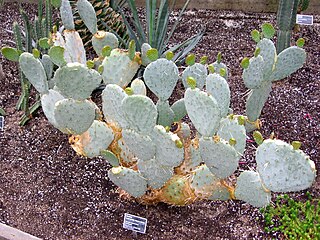 W
WOpuntia setispina is a species of cactus found in the Sierra Madre Occidental in Chihuahua, Sonora, and Durango in Mexico. The name O. setispina has been listed as a synonym under Opuntia macrorhiza and Opuntia pottsii, but shows no close relationship to either species. It is more of a woody shrubby, often somewhat tree-like species, growing up to approximately 1 meter tall and wide. It is morphologically similar to Opuntia chlorotica, Opuntia santa-rita, and Opuntia gosseliniana.
 W
WPachycereus pringlei, also known as Mexican giant cardon or elephant cactus, is a species of cactus native to northwestern Mexico in the states of Baja California, Baja California Sur, and Sonora. It is commonly known as cardón, a name derived from the Spanish word cardo, meaning "thistle".
 W
WA pitaya or pitahaya is the fruit of several different cactus species indigenous to the Americas. Pitaya usually refers to fruit of the genus Stenocereus, while pitahaya or dragon fruit refers to fruit of the genus Selenicereus, both in the family Cactaceae. Dragon fruit is cultivated in Mexico, Southeast Asia, India, the United States, the Caribbean, Australia, Mesoamerica and throughout tropical and subtropical world regions.
 W
WPrunus fasciculata, also known as wild almond, desert almond, or desert peach is a spiny and woody shrub producing wild almonds, native to the deserts of Arizona, California, Baja California, Nevada and Utah.
 W
WPrunus fremontii is a North American species of plants in the rose family, known by the common name desert apricot. It takes its scientific name from John C. Frémont. It is found in northern and western Baja California especially, mostly Pacific and western, and the adjacent area of southern California. It also occurs in northern Baja California Sur.
 W
WPrunus ilicifolia is native to the chaparral areas of coastal California, Baja California, and Baja California Sur. as well as the desert chaparral areas of the Mojave desert. Despite its name, it is not a true cherry species. It is traditionally included in P. subg. Laurocerasus, but molecular research indicates it is nested with species of P. subg. Padus.
 W
WThe saguaro is a tree-like cactus species in the monotypic genus Carnegiea that can grow to be over 12 meters tall. It is native to the Sonoran Desert in Arizona, the Mexican state of Sonora, and the Whipple Mountains and Imperial County areas of California. The saguaro blossom is the state wildflower of Arizona. Its scientific name is given in honor of Andrew Carnegie. In 1994, Saguaro National Park, near Tucson, Arizona, was designated to help protect this species and its habitat.
 W
WSantalum acuminatum, the desert quandong, is a hemiparasitic plant in the sandalwood family, Santalaceae, which is widely dispersed throughout the central deserts and southern areas of Australia. The species, especially its edible fruit, is also commonly referred to as quandong or native peach. The use of the fruit as an exotic flavouring, one of the best known bush tucker, has led to the attempted domestication of the species.
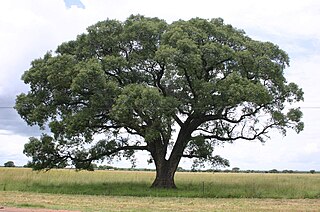 W
WSclerocarya birrea, commonly known as the marula, is a medium-sized deciduous tree, indigenous to the miombo woodlands of Southern Africa, the Sudano-Sahelian range of West Africa, the savanna woodlands of East Africa and Madagascar.
 W
WSelenicereus costaricensis or Hylocereus costaricensis, known as the Costa Rican pitahaya or Costa Rica nightblooming cactus, is a cactus species native to Costa Rica and Nicaragua. The species is grown commercially for its fruit, called pitaya or pitahaya, but is also an impressive ornamental vine with huge flowers. Its scientific name is problematic for several reasons. The species may not be distinct from Selenicereus monacanthus.
 W
WSelenicereus undatus, the white-fleshed pitahaya, is a species of Cactaceae and is the most cultivated species in the genus. It is used both as an ornamental vine and as a fruit crop - the pitahaya or dragon fruit. The native origin of the species has never been resolved.
 W
WSolanum centrale, the kutjera, or Australian desert raisin, is a plant native to the more arid parts of Australia. Like other "bush tomatoes", it has been used as a food source by Central Australia and Aboriginal groups for millennia.
 W
WSolanum incanum is a species of nightshade, a flowering plant in the family Solanaceae. It is native to Sub-Saharan Africa and the Middle East, eastwards to India. The species was introduced to Taiwan and Vietnam.
 W
WStenocereus thurberi, the organ pipe cactus, is a species of cactus native to Mexico and the United States. The species is found in rocky desert. Two subspecies are recognized based on their distribution and height. The Organ Pipe Cactus National Monument is named for the species.
 W
WStrychnos pungens is a tree which belongs to the Loganiaceae. Usually about 5m tall, occurring in mixed woodland or in rocky places. Branches are short and rigid. Leaves are smooth, stiff, opposite, elliptic and with a sharp, spine-like tip. Occurring in South Africa on the Witwatersrand, Magaliesberg and further north to northern Namibia, northern Botswana and Zimbabwe.
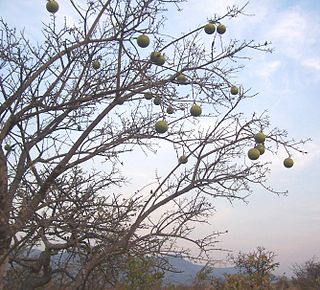 W
WStrychnos spinosa, the Natal orange, is a tree indigenous to tropical and subtropical Africa. It produces, sweet-sour, yellow fruits, containing numerous hard brown seeds. Greenish-white flowers grow in dense heads at the ends of branches. The fruits tend to appear only after good rains. It is related to the deadly Strychnos nux-vomica, which contains strychnine. The smooth, hard fruit are large and green, ripen to yellow colour. Inside the fruit are tightly packed seeds, which may be toxic, surrounded by a fleshy, brown, edible covering. Animals such as baboon, monkeys, bushpig, nyala and eland eat the fruit. The leaves are a popular food source for browsers such as duiker, kudu, impala, steenbok, nyala and elephant.
 W
WWattleseeds are the edible seeds from any of 120 species of Australian Acacia that were traditionally used as food by Aboriginal Australians, and eaten either green or dried to make a type of bush bread. Acacia murrayana and A. victoriae have been studied as candidates for commercial production.
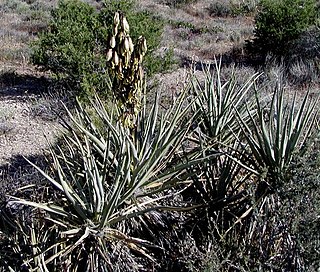 W
WYucca baccata is a common species of yucca native to the deserts of the southwestern United States and northwestern Mexico, from southeastern California north to Utah, east to western Texas and south to Sonora and Chihuahua. It is also reported in the wild in Colombia.
 W
WZiziphus mauritiana, also known as Indian jujube, Indian plum, Chinese date, Chinese apple, and dunks is a tropical fruit tree species belonging to the family Rhamnaceae. It is often confused with the closely related Chinese jujube, but whereas Z. jujuba prefers temperate climates, Z. mauritiana is tropical to subtropical.
 W
WZiziphus spina-christi, known as the Christ's thorn jujube, is an evergreen tree or plant native to northern and tropical Africa, Southern and Western Asia. It is native to the Levant, East Africa and some tropical countries. Fruit and leaves from the tree were used in preparing ancient Egyptian foods and cultural practices.